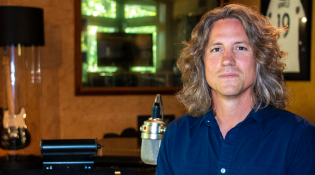Tech Focus: Production Music, Part 1 — Sports Is Big Part of the Industry’s Resurgence
Amidst a revolution in genres and distribution, copyright issues are a sour note
Story Highlights
You don’t have to be in the music business to have noticed the eye-watering amounts of money poured into legacy music catalogs lately. Artists including Paul Simon ($250 million), Bob Dylan ($325 million), and Bruce Springsteen ($550 million) have pushed total catalog sales into the billions of dollars at a time when the U.S. music industry hit a 22-year high of $15 billion in sales and the global music business reached $26 billion last year.
And the sports-music business has had a big share in that growth.
“It has been busy pretty much nonstop for a year,” says Matthew Gutknecht, director, sports entertainment, APM Music. “We anticipate high demand for even more [music] content in coming months.”
APM is a massive repository of more than 1 million tracks of both custom and catalog music, mostly from its joint owners, Sony Music Publishing and Universal Music Publishing, two of the so-called Big Three remaining legacy-era record labels. That number was whittled down from a dozen three decades ago through an often torturous consolidation that saw the entire industry fall from the CD-induced highs of the 1990s to an endangered species hunted by internet startups like Napster at the turn of the century, only to return stronger than ever in a Wall Street-fueled happy ending.
The music industry’s reprise coincided with the ascension of broadcast sports over the past 20 years, which reached an estimated value of $480 billion-$620 billion.
Back to Normal
While music in general is having a Wall Street moment, production-music executives are relieved to find that its use for sports is becoming more frequent and more conventional after two years of artificial crowd sounds and other ways that audio elements were deployed to create a sense of normalcy. That allows more-nuanced changes in music choices to be noticed.
For instance, there is a growing use of high-energy rock music in broadcast sports, even in traditionally staid sports like golf, notes Peter Alexander, sales manager, Sound Ideas. His company is the umbrella for producers The Hollywood Edge, Westar Music, and the recently acquired Sound Dogs and provides content to collegiate customers such as Georgia Tech, Wake Forest Athletics, and Hofstra University.
“Even in basketball, which has been mostly hip-hop for years, and especially lately in collegiate sports, in any situation where they want to get the crowd up quickly,” he says, “there has been less reliance on sound effects and more on certain types of music, like classic rock, to accomplish that.”
Buttressing that case is rock’s resurgence elsewhere in culture, with bands like Foo Fighters and Greta Van Fleet topping charts.
Rock may be ascendant for the moment, but a broader range of music genres has been applied to sports broadcasts in the past year. That’s partly due to an effort to attract wider audiences and broaden sports’ appeal to more and different demographics, according to Dan Cross, music director, Megatrax.
“We have noticed not only an uptick in songs but also a widening of the styles in general,” he explains. “Where it used to lean primarily into rock, hip-hop, and orchestral/hybrid thematic music, there has been a growing trend towards styles like dance-pop, EDM, and other more pop styles, both vocal and instrumental. It’s almost like there are no more designated lanes for sports music, and crossovers are abundant. Going to commercial one time could be your typical sports theme and then the next could be the new Dua Lipa single. It’s all over the map.”

Stephen Arnold Music’s Whitney Arnold: “Production music has to meet the same standards as what fans hear on the radio.”
Whitney Arnold, VP, music services, Stephen Arnold Music, a vendor of custom music for NBC Sports, CNN Sports, ESPN, and others, says production music’s mission now that broadcast sports are back nearly to normal is to communicate and re-establish the energy that went missing during COVID. What’s also changing is the modernization of the productions themselves.
“The genres for various sports haven’t really changed,” he observes. “You still have hip-hop or basketball and so on. But there are more hybrid sounds being used, more syncopated beats, just more in the way of production values. We’ve done the same with our productions to reflect that. Production music has to meet the same standards as what fans hear on the radio.”
Avoiding Copyright Infringement
The growing synergy between music and sports is highlighted by APM Music’s milestone arrangement with the National Hockey League. Under the exclusive seven-year deal signed in 2021, the Hollywood-based production-music supplier provides all the music used by the NHL and its 32 teams, collectively and individually, for broadcast, in-venue, commercial, promotional, and social-media applications. At the time, Gutknecht referred to the contract as “the soundtrack for a new era in the NHL.”

APM Music’s Matthew Gutknecht: “The rules of the game have changed. We interface with legal departments far more now than in the past.”
He alluded to possible new deals with other sports entities in the near future, discussions he says today are ”ongoing.” The discussions stem from a core issue that sports leagues, venues, and broadcasters have shared in recent years: prerecorded copyrighted music played in a stadium or arena during a broadcast leaks through the many open broadcast microphones at the venues into televised audio, creating a de facto copyright infringement. Consequently, litigation between those entities and music publishers has become more frequent in recent years as the range of outlets and amount of sports content on the air and online have mushroomed, increasing the potential for (mostly) unintended but costly copyright infringements. For instance, a batter’s walk-on music during a baseball game might be properly licensed for live use in the stadium, but its leaking into a broadcast of the game through crowd-capture and other open microphones could constitute an unintended — but nonetheless very real, legally speaking — copyright infringement.
“The rules of the game have changed,” says Gutknecht, noting that rightsholders have been more forcefully asserting such infringements. “We interface with legal departments far more now than in the past.”
APM’s deal with the NHL created a template for what Gutknecht calls “a comprehensive music solution” for sports leagues, teams, and venues. It will be scalable for application to streamed sports, he notes, citing recently announced deals like Apple’s foray into live sports with the mobile distribution of MLB games on Apple TV+, as well as its reported inside track to stream the NFL’s Sunday Ticket. He adds that the shift toward OTT distribution of sports and the likely change in demographics will affect music choices and workflow.
“It would bring about more production efficiency if everyone is in the same content ecosystem,” he contends, adding that the shift to online distribution will increase what he calls “content velocity.”
The APM/NHL deal garnered plenty of interest in the production-music sector. Arnold admires the move: “It’s not as unique as it might seem. As a content producer, you need to know where the rights are. That’s why we indemnify our customers on that. They need to know where the music’s coming from. We need to be a trusted partner.”
Ontario-based Sound Ideas Sales Manager Peter Alexander says that, although copyright-infringement litigation in Canada “is not inconsequential,” it’s not at the same level as in the U.S., where litigation is often a first resort for almost any kind of disagreement. Instead, he asserts, a lack of education about copyright law is the root cause of the problem.
“Even colleges that teach broadcast skills don’t fully understand what’s involved with copyrights,” he says. “Students, particularly the current generation of them, don’t understand that they can’t just grab music off the radio for their own productions. I blame Napster for that.”
Click here for Tech Focus: Production Music, Part 2 — What’s Happening in Libraries.
